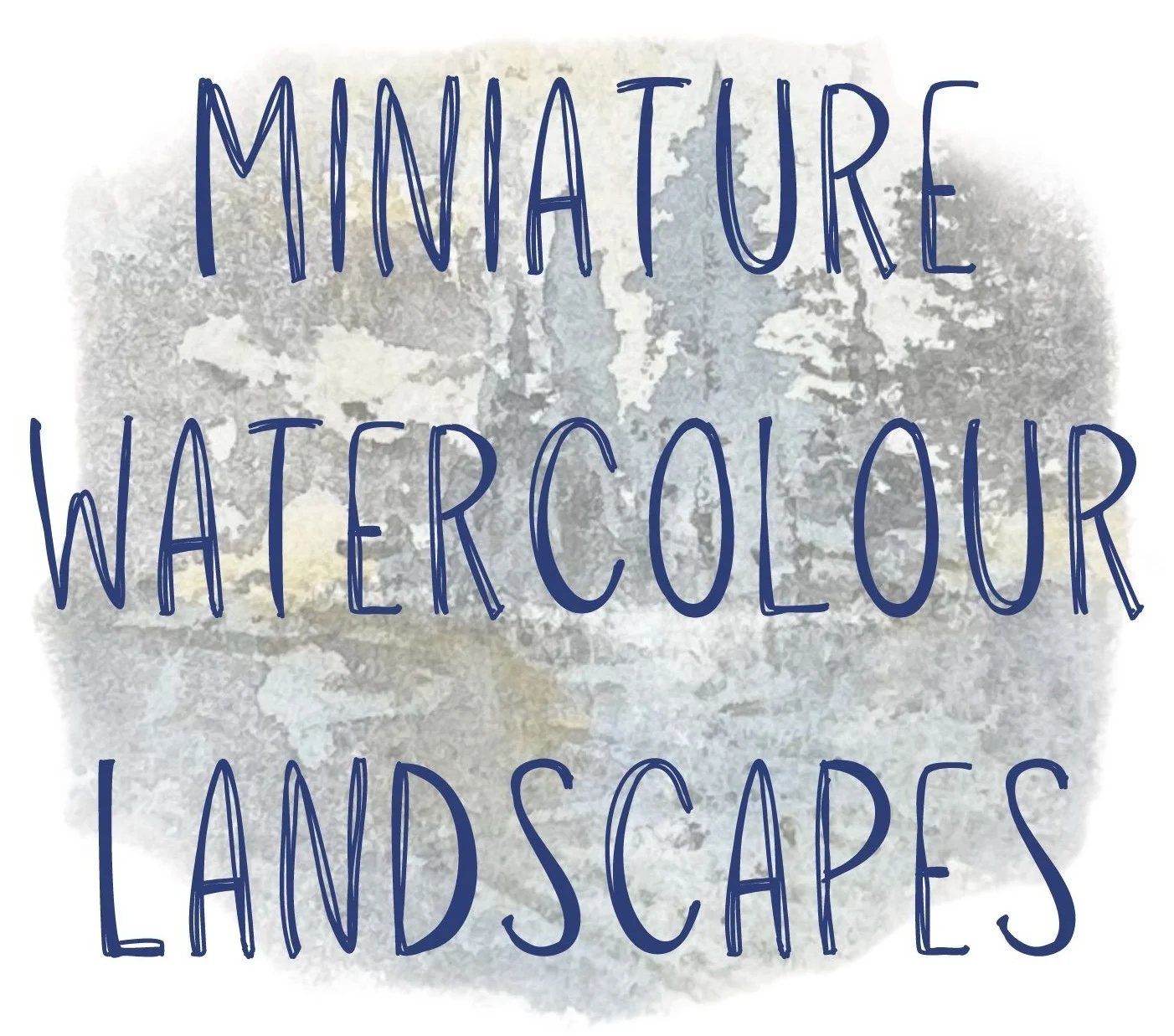The Art of …
… miniature watercolour landscape painting is a delightful and intricate art form, capturing the beauty of nature in a small, intimate format. In this blog post, I share the techniques, tools, and tips to help you master the art of creating stunning miniature watercolour landscapes.
1. Selecting the right materials:
Choosing high-quality watercolour paper is important. It needs to be capable of faithfully reproducing colours and handling the various ways you might use to apply those colours to its surface.
Opt for professional-grade watercolour paints that offer vibrant pigments and excellent lightfastness.
Invest in fine-tipped brushes for detailed work, broad brushes for washes, sponges for additional textures and effects, and a good-sized palette with large wells for mixing colours efficiently.
2. Planning your composition:
Plan your composition thoughtfully, considering the focal point, perspective, and overall tonal balance.
On your watercolour paper, mask off or measure out an area slightly larger than your intended final size. Doing this will ensure you don’t feel restricted in applying your washes ( see #3 below)
Keep it simple – focus on one or two main elements to avoid overcrowding the small space.
3. Mastering washes and layers:
Use controlled washes to establish the base colours of your landscape, starting with the lightest tones.
Build up layers gradually, sometimes blending washes, sometimes allowing them to dry before adding the next. This technique adds depth and dimension to your miniature masterpiece.
4. Embracing negative painting:
Experiment with negative painting techniques to define shapes by painting around them, creating intricate details and textures.
This method can be particularly effective for foliage, rocks, and other natural elements found in landscapes.
5. Playing with perspective:
Create the illusion of depth and distance by adjusting the intensity of colours and details in the foreground, middle ground, and background.
Experiment with atmospheric perspective, using lighter and cooler colours for distant elements to convey depth.
6. Exploring different styles:
Miniature watercolour landscapes give you an opportunity to explore various artistic styles, from realistic to impressionistic or even abstract.
Experiment with different brush strokes, colour palettes, and techniques to find a style that you’re comfortable with and suits you.
7. Adding fine details:
Use fine-tipped brushes or even toothpicks for adding intricate details like branches, grass, or tiny flowers.
Pay attention to the balance of details, ensuring that they enhance the overall composition without overwhelming the miniature scale.
8. Displaying Your Artwork:
Once your miniature watercolour landscape is complete and thoroughly dry, consider framing it with a generous window mount in a small, elegant frame to display it in the best possible way.
Conclusion:
Overworking a painting is a common issue in watercolour and deciding when your artwork is finished is challenging, no more so than with miniatures.
Experience will guide you but, with less is more as a rule of thumb, you can rely on your viewers’ imagination to do the rest!
Mastering the art of miniature watercolour landscape painting is a fulfilling journey that combines creativity and precision. Experiment with different techniques, embrace the beauty of small-scale compositions, and watch as your miniature landscapes come to life.
